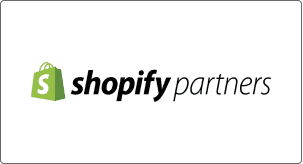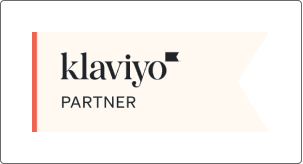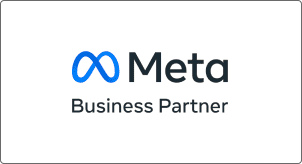Forget generic SEO, Australia’s big players in the digital space need a more powerful approach. A tailored enterprise SEO strategy delivers a smarter, scalable, and data-led approach built to help large organisations dominate search rankings, not just compete in them.
For Australian enterprises, nailing SEO means grabbing a big slice of the online pie, boosting revenue big time, and becoming a trusted brand. This article dives into some advanced SEO secrets for massive websites, showing how to handle the tricky stuff and use enterprise SEO to come out on top online.
What is Enterprise SEO (and Why It’s Not Just “Bigger” SEO)
Enterprise SEO is a highly structured, data-driven approach to organic search tailored specifically for organisations with complex, large-scale digital operations.
We’re talking about:
- Websites with thousands (if not millions) of pages.
- Multiple brands or business units.
- International reach or national spread.
- Stakeholders from legal, IT, product, and everyone in between.
Sure, the fundamentals of SEO -technical optimisation, quality content, building authority – still apply. But the game changes at scale.
You’ll need:
- Advanced tooling and automation to handle the volume.
- Cross-functional collaboration to actually get things implemented.
- Precise alignment with business goals so SEO isn’t siloed in marketing.
- Analytics that speak C-suite language (yes, they want dashboards, not excuses).
In short: enterprise SEO isn’t just SEO on steroids. It’s SEO with boardroom-level accountability.
How to Manage SEO for a Giant Website Without Losing Your Mind
When you’ve got a site with thousands of URLs, flying blind is not an option. You need structure, automation, and a ruthless focus on impact. Here’s where to start:
1. Audit First, Optimise Second
You can’t fix what you haven’t measured. Run a full-scale content and technical audit using tools like Screaming Frog or Sitebulb. The aim?
- Identify thin, duplicate, or outdated content.
- Pinpoint crawl traps and broken links.
- Surface high-value pages that deserve more love.
Then prioritise like a pro: focus on the pages that actually drive business outcomes.
2. Lock Down Your Technical SEO
Get your foundations right before scaling anything:
- Crawl budget: Don’t waste Googlebot’s time. Use robots.txt, sitemaps, and internal linking to make crawling efficient.
- Site structure: Keep it clean and logical. Flat, well-categorised architectures reduce click depth and help SEO scalability.
- Speed and Core Web Vitals: With almost 50% of traffic in Australia coming from mobile, slow pages aren’t just annoying, they’re revenue killers.
- Schema markup: Help search engines (and users) understand your content better. Rich snippets are pure SERP real estate gold.
- Canonicalisation: Duplicate content? Sort it. Use canonical tags to consolidate signals and avoid confusion.
3. Automate or Die Trying
You simply can’t do it all manually. Things you should be automating:
- Rank tracking across thousands of keywords.
- Site audits that flag issues before they snowball.
- Reporting dashboards that update in real time.
At enterprise scale, tools like BrightEdge, SEMrush, or Conductor aren’t luxuries, they’re lifelines.
4. Build Content at Scale, Without Losing the Plot
Content at scale doesn’t have to mean content bloat. Here’s how to keep it sharp:
- Programmatic SEO: Dynamically generate pages (e.g., for locations, product variants) using structured data.
- Templates that don’t suck: Standardise page layouts with SEO baked in from the start.
- Hub-and-spoke model: Build authority around core topics, with comprehensive pillar content linking to deeper, more specific articles.
- Content refresh cycles: Updating old pages can deliver major traffic gains. Don’t just create,curate.
5. Make SEO Everyone’s Job
From developers to writers to brand guardians, SEO must be embedded in your workflows. Upskill your teams, bake SEO into content briefs, and make technical hygiene part of the dev backlog.
Australia-Specific SEO Challenges (And How to Beat Them)
Running enterprise SEO in Australia comes with its own quirks. Understanding the local playing field is key to winning it.
1. National Reach vs. Local Intent
You might be a national brand, but searchers still think local. Balancing “plumber Melbourne” with “plumbing services Australia-wide” requires laser-focused geo-targeting, robust location pages, and a rock-solid Google Business Profile strategy.
2. Big Ambitions, Small(er) Market
Our population’s smaller than the US or UK, but competition? Still fierce. This means fewer clicks up for grabs, and every ranking counts. Enterprise SEO here must be more strategic, not more scattergun.
3. Internal Roadblocks
Silos, politics, and outdated tech stacks – sound familiar? Getting SEO changes approved and implemented can feel like pulling teeth. You’ll need strong internal champions, airtight business cases, and relentless follow-through.
4. Scaling Content Without Diluting Quality
It’s tempting to crank out content like there’s no tomorrow. But quality trumps quantity every time. Aussie audiences expect relevance, clarity, and a local flavour. Generic, keyword-stuffed content won’t cut it.
5. Staying Ahead of Google (Good Luck!)
With Google owning nearly 94% of the search market here, every algorithm update hits hard. Plus, AI-driven search, voice queries, and visual results are shifting how Aussies search, and how you need to optimise.
Proving ROI: Because Rankings Alone Don’t Pay the Bills
Let’s face it, if you can’t measure SEO’s value, your budget’s always on the chopping block. Here’s how to prove it’s pulling its weight.
Step 1: Track Costs
Factor in everything:
- Internal team time.
- Agency or consultant fees.
- Tools and platforms.
- Dev time for technical SEO fixes.
- Content production costs.
Step 2: Calculate Value
Use these metrics to quantify impact:
- Organic traffic growth (non-branded): Shows new reach.
- Equivalent paid value: What would that traffic cost via Google Ads?
- Lead generation and conversion rates: Are SEO leads actually closing?
- E-commerce revenue from organic: Clean, attributable dollars.
- Share of voice vs. competitors: Are you the loudest in your niche?
Bonus: Organic traffic often brings higher LTV customers and lower CAC – a win for both marketing and finance.
Step 3: Attribution Modelling
Understand the customer journey. SEO isn’t always the last click. Use first-click, linear, and data-driven attribution to reflect SEO’s true influence.
Final Word: SEO Isn’t a Campaign – It’s an Ongoing Competitive Advantage
For large Australian organisations, enterprise SEO isn’t just a marketing tactic. It’s a long-term investment in brand equity, market share, and customer acquisition.
It’s complex, sure. But the payoff? Massive. Higher visibility, stronger authority, better leads, and an engine that keeps delivering long after your paid campaigns stop.
The winners in this space aren’t the ones who dabble. They’re the ones who build enterprise SEO into the fabric of their business.
If you’re a large Australian organisation looking to scale sustainably, gain market share, and future-proof your digital presence, 3 Phase Marketing is your Enterprise SEO partner.
We specialise in high-performance SEO strategies built for complexity, crafted for growth, and aligned to business impact. No fluff. Just results.
Let’s talk about how we can help you dominate the search results, now and into the future.
Book your free strategy session today.
Frequently Asked Questions (FAQs)
- What is an Enterprise SEO strategy, and why is it important for large organisations in Australia?
An Enterprise SEO strategy is a structured, data-driven approach to search engine optimisation, specifically designed for large and complex websites. In Australia, where competition is tight across key sectors like finance, healthcare, and e-commerce, this kind of strategy helps organisations improve visibility, scale content efficiently, and drive sustainable organic growth. It’s not just about rankings. It’s about aligning SEO with business objectives to increase market share and revenue. - How is an Enterprise SEO strategy different from traditional SEO?
Traditional SEO usually targets smaller sites with a limited number of pages and keywords. In contrast, an Enterprise SEO strategy in Australia is built for scale. Think thousands (or millions) of pages, multiple stakeholders, and cross-functional collaboration. It often involves automation, advanced analytics, and tight integration with IT, content, and branding teams to manage SEO at scale effectively. - What industries in Australia benefit most from an Enterprise SEO strategy?
Any large-scale organisation in Australia with a complex digital presence can benefit, especially those in sectors like banking, insurance, SaaS, telecommunications, healthcare, higher education, and large-scale retail. An Enterprise SEO strategy is particularly critical for companies targeting multiple regions, offering diverse product lines, or needing to maintain strong brand visibility online. - What are the biggest challenges of implementing an Enterprise SEO strategy in Australia?
Common challenges include dealing with legacy systems, slow internal approval processes, limited technical resources, and demonstrating ROI across departments. In Australia, geographic targeting also adds complexity, balancing national visibility with local SEO efforts. A successful Enterprise SEO strategy requires internal buy-in, agile execution, and long-term investment. - How long does it take to see results from an Enterprise SEO strategy in Australia?
While quick wins are possible, a strong Enterprise SEO strategy is a long game. In Australia, most organisations see measurable gains in visibility, traffic, and leads within 4-6 months, with significant ROI typically appearing after 6-12 months. The timeline depends on factors like site health, industry competition, content quality, and how quickly SEO recommendations are implemented.







